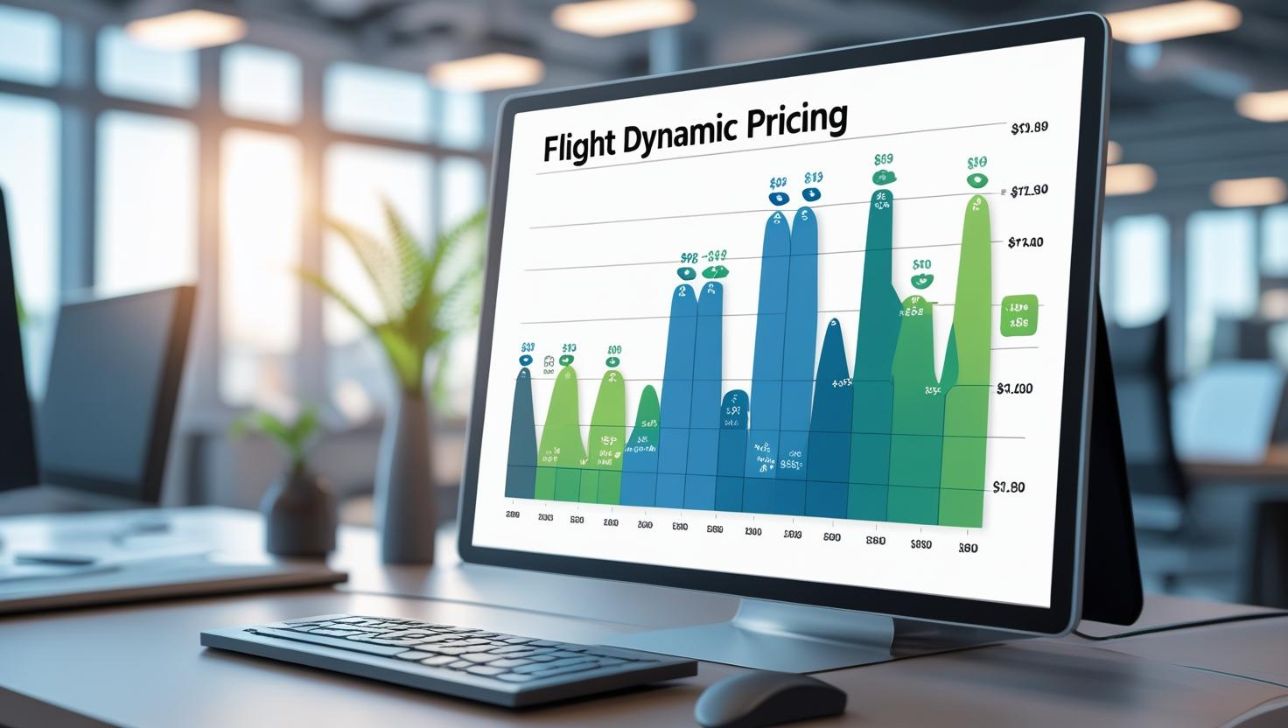Understanding Dynamic Pricing: Why Your Flight Price Keeps Changing

Ever wonder why that flight you eyed yesterday is suddenly a hundred dollars more today? Or why your dream hotel room seems to fluctuate in price every time you refresh the page? You're not alone! This seemingly erratic behavior is the work of dynamic pricing, a sophisticated strategy employed by airlines, hotels, and other travel providers to maximize revenue. Far from being random, it's a carefully calculated dance of algorithms, data, and human behavior.
What Exactly is Dynamic Pricing?
At its core, dynamic pricing (also known as surge pricing, demand pricing, or time-based pricing) is a flexible pricing strategy where prices for products or services are adjusted in real-time based on current market demands. Think of it like a stock market for travel – prices are constantly moving, up and down, driven by a multitude of factors.
The goal? To find the "sweet spot" where a company can charge the highest possible price that consumers are willing to pay, while also ensuring they fill up their inventory (seats on a plane, rooms in a hotel).
How Does It Affect Flights and Hotels?
For travellers, dynamic pricing is most noticeable in the airline and hotel industries. Here's a breakdown of the key factors that cause those maddening price fluctuations:
Supply and Demand: This is the golden rule. When demand for a particular flight route or hotel room is high (think holidays, major events, or peak seasons), prices will surge. Conversely, during off-peak times or when demand is low, prices will drop to attract bookings.
Time Until Departure/Check-in: Generally, booking further in advance can yield better prices, especially for flights. As the departure or check-in date approaches, and inventory becomes limited, prices tend to increase. However, in some cases, last-minute deals might appear if a flight or hotel is struggling to fill up.
Day of the Week & Time of Day: Ever noticed flights are cheaper on Tuesdays and Wednesdays? That's because business travel typically slows down midweek, leading to lower demand. Similarly, booking late at night or very early in the morning might sometimes reveal better deals as fewer people are actively searching.
Competitor Pricing: Airlines and hotels constantly monitor each other's prices. If a competitor drops their rates, others might follow suit to remain competitive, creating temporary price wars that can benefit consumers.
Historical Data & Predictive Analytics: Sophisticated algorithms analyze years of past booking data to predict future demand patterns. This includes everything from seasonal trends to school holidays, major sporting events, and even local weather forecasts.
User Search Behavior (Sometimes!): While a common myth is that repeatedly searching for the same flight increases its price, most major travel sites state this isn't directly the case. However, some smaller, less transparent sites might use this as a signal of high interest. It's more about overall demand for that route/date, not your individual clicks.
Ancillary Services: Beyond the base fare, factors like baggage fees, seat selection, and in-flight meals can contribute to the overall cost, and these can also be dynamically priced.
Find the Best Flight Deals – Worldwide

Tips to Beat Dynamic Pricing
While you can't entirely escape dynamic pricing, you can definitely play the game smarter and increase your chances of snagging a better deal:
Be Flexible with Your Dates: This is arguably the most impactful tip. If your travel dates are negotiable, use flexible date search options on flight and hotel comparison websites. Flying a day earlier or later, or even shifting your trip by a week, can lead to significant savings.
Book in Advance (But Not Too Far!): For flights, a sweet spot often exists around 2-3 months for domestic travel and 4-6 months for international. Booking too far out can sometimes be more expensive, and leaving it to the last minute is usually a gamble.
Set Price Alerts: Many flight and hotel booking platforms (like Google Flights, Skyscanner, Kayak) allow you to set price alerts for specific routes or hotels. You'll get notified when the price drops, helping you pounce on a good deal.
Consider Different Airports: If your destination has multiple airports nearby, check prices for all of them. Sometimes, flying into or out of a smaller, less popular airport can save you money.
Be Flexible with Your Destination: If you're simply looking for a getaway and aren't tied to a specific location, use the "Everywhere" or "Explore" features on search engines. This can reveal surprisingly affordable destinations based on your travel dates.
Clear Your Cookies/Use Incognito Mode: While the direct impact on price is debated, clearing your browser cookies or using an incognito/private Browse window can sometimes prevent certain websites from tracking your previous searches and potentially showing you higher prices. It's a simple step that doesn't hurt to try!
Consider Package Deals: Sometimes, bundling flights and hotels together through a travel agent or online travel agency can offer better overall value than booking them separately.
Travel During Off-Peak Seasons: If possible, avoid major holidays, school breaks, and peak tourist seasons. Prices are naturally lower when fewer people are traveling.
Look for Midweek Deals: Flights and hotel stays on Tuesdays, Wednesdays, and sometimes Thursdays are often cheaper than weekend travel.
Be Patient (But Not Too Patient!): It's a fine line. Don't panic and book the first price you see, but also don't wait indefinitely, especially for popular routes or dates. If you see a price you're comfortable with and it aligns with your budget, it might be wise to book it.
Dynamic pricing is here to stay, but by understanding its mechanics and employing smart booking strategies, you can navigate the ever-changing landscape of travel costs and secure more favorable prices for your next adventure. Happy travels!






